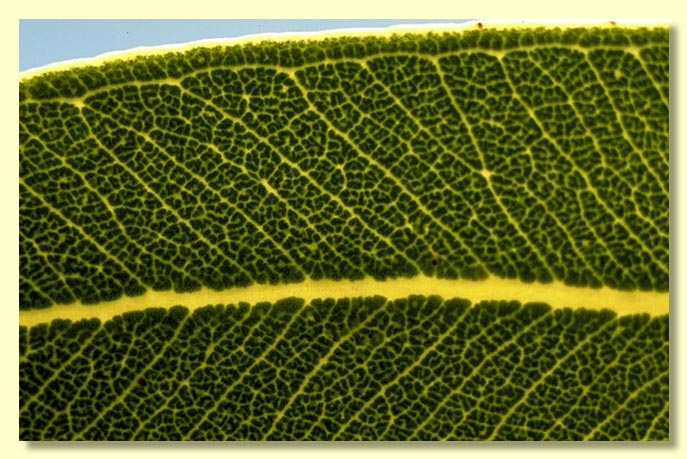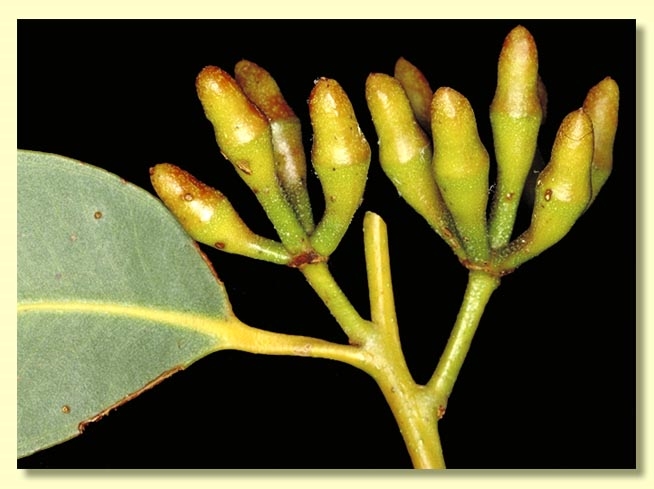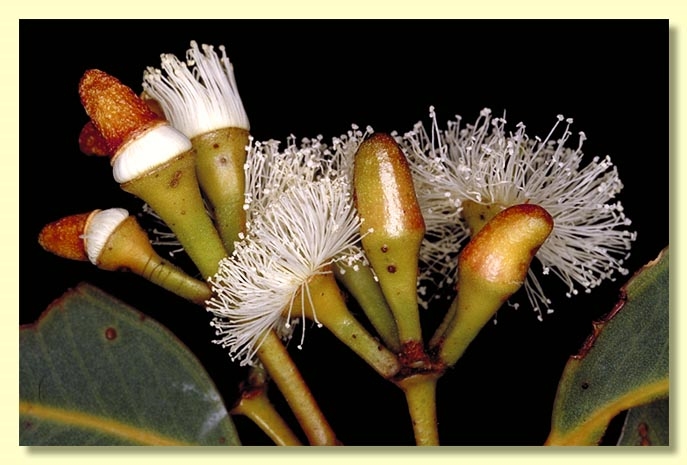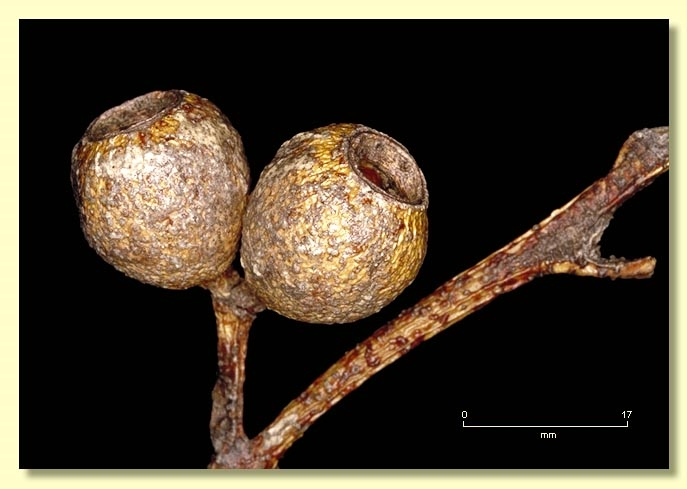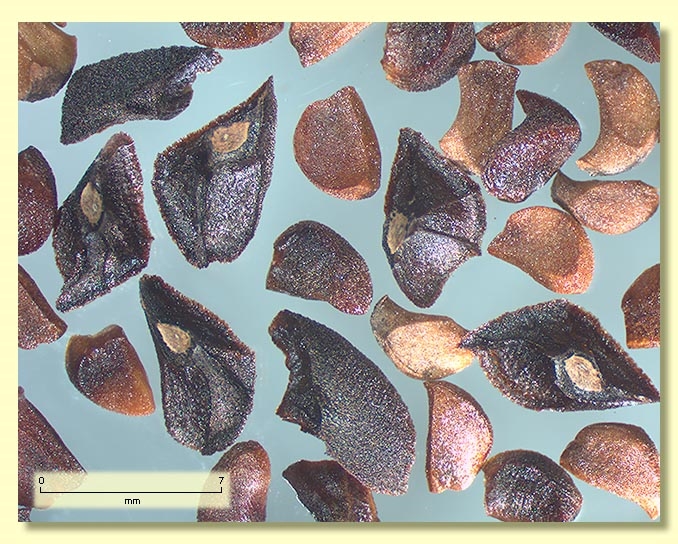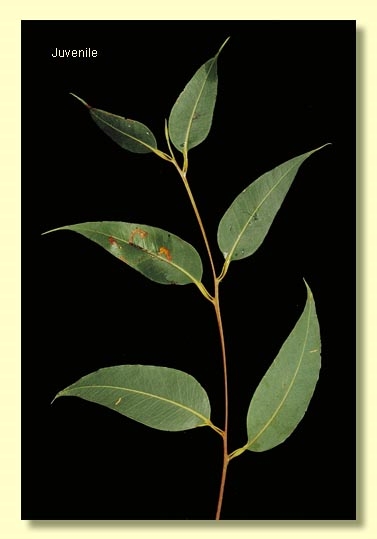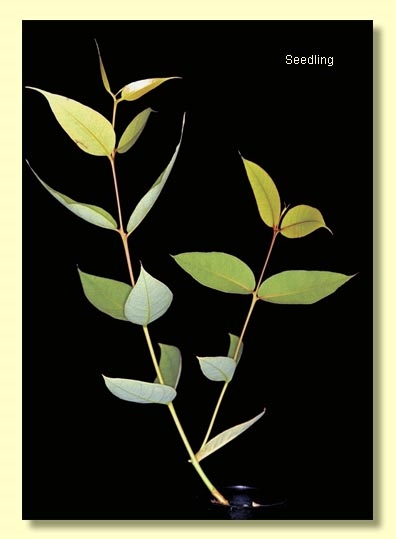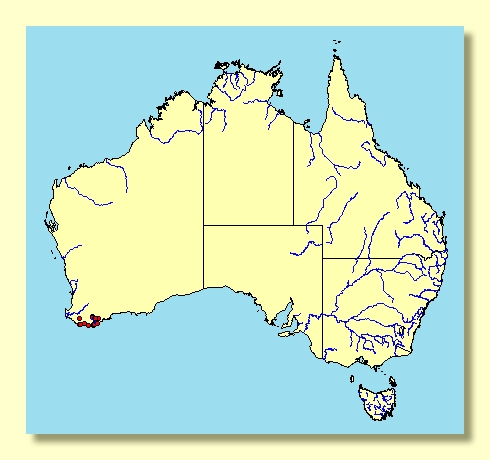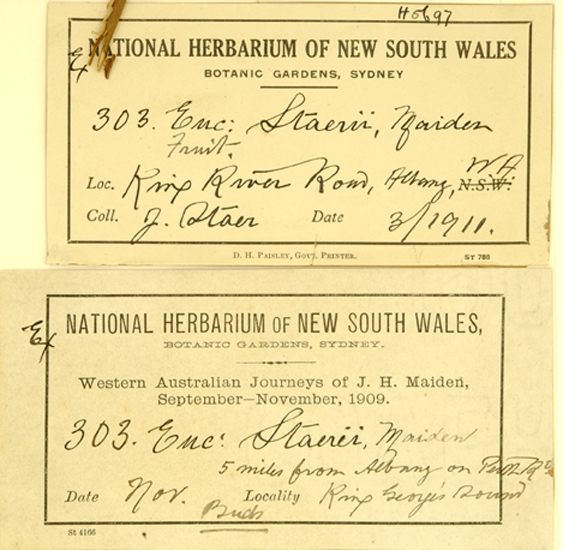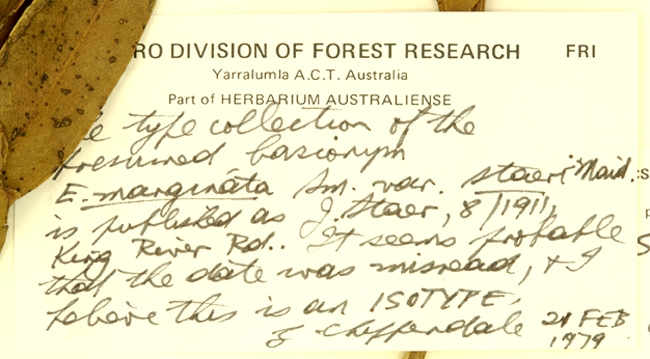Eucalyptus | Eucalyptus | Longistylus | Arboreae | Occidentales
Euclid - Online edition
Eucalyptus staeri
Bark rough over whole of trunk and branches to ca 4 cm diameter, fibrous, held in long flattened strips, grey-brown over reddish brown.
Branchlets lacking oil glands in the pith.
Juvenile growth (coppice or field seedlings to 50 cm): stems rounded to square in cross-section; juvenile leaves coarse, opposite, sessile and amplexicaul for about 3 nodes then alternate, petiolate, ovate to broadly lanceolate, 8–14 cm long, 3–6 cm wide, dull, discolorous, green.
Adult leaves coarse, thick, alternate, petioles flattened, 1–2.3 cm long; blade lanceolate to slightly falcate, 8–12.5(14.7) cm long, 1.8–3.5(4.2) cm wide, base tapering or oblique, margin entire, apex a drip-tip, concolorous, dull or slightly glossy, green, side-veins greater than 45° to midrib, reticulation dense, intramarginal vein fairly close to margin, oil glands apparently absent.
Inflorescence axillary unbranched, peduncles flattened or angular, 1.4–2.3 cm long, buds 7 to15 per umbel, pedicels (0.3)0.5–1.9 cm long. Mature buds cylindrical to fusiform, 1.3–2 cm long, 0.5–0.7 cm wide, scar absent, the single operculum long and bluntly conical to ca twice as long as wide, outer stamens erect, inner inflexed, anthers reniform, versatile, dorsifixed, dehiscing by oblique confluent slits, style shorter than the erect stamens, straight, stigma tapered, locules 3, the placentae each with 2 vertical rows of ovules. Flowers creamy white.
Fruit pedicels 0.3–1.9 cm long, truncate-globose, 1.4–2.3 cm long, 1.6–2.2 cm wide, disc level to descending, valves 3, enclosed or at rim level.
Seeds blackish brown, 2–5.5 mm long, obliquely pyramidal, dorsal surface minutely granular, ventrally ridged, hilum terminal.
Cultivated seedlings (measured at ca node 10): cotyledons reniform; stems more or less rounded in cross-section; leaves opposite, sessile and amplexicaul for ca 5 nodes then becoming alternate, petiolate, broadly lanceolate, 8–12 cm long, 3–5 cm wide, dull, green, slightly discolorous until ca node 9–10.
Flowering has been recorded in September, November and December.
A small tree or mallee endemic to Western Australia, from north-east of Walpole east to Bremer Bay. It occurs on dunes and in sandplain heath as an emergent mallee but may be a stunted tree on slightly wetter or more fertile sites. The bark is coarsely rough and thick and the adult leaves are concolorous, apparently glandless, thick and slightly glossy, green.
Eucalyptus staeri is closely related to Jarrah, E. marginata, which differs in being a medium-sized to tall tree with flattish strips of rough bark, smaller, strongly discolorous leaves which are prominently glandular. In both species the outer stamens are held erect in bud. The buds and fruits of E. staeri are larger than those of E. marginata. Intermediate forms between the two species are common.
Eucalyptus staeri belongs in Eucalyptus subgenus Eucalyptus section Longistyles, characterised by buds with a single operculum (hence no operculum scar), reniform anthers that shed pollen through slits that are confluent apically, ovules arranged in two rows on the placenta, plus the features outlined above. Species in subgenus Eucalyptus fall within two groups depending on how the stamens shed their pollen. One group, including E. staeri, E. jacksonii, E. marginata and E. brevistylis from Western Australia and the majority of species in subgenus Eucalyptus from eastern Australia, shed pollen from confluent slits . Many other western species such as E. patens, shed pollen from oblong anthers with slits that always remain separate.



